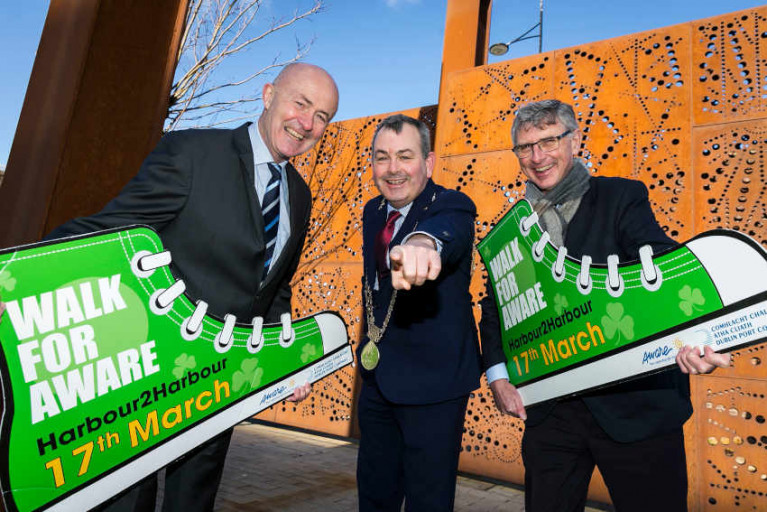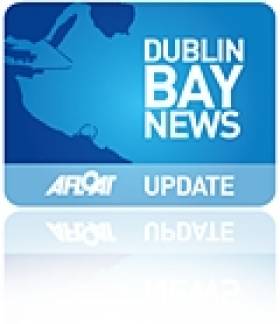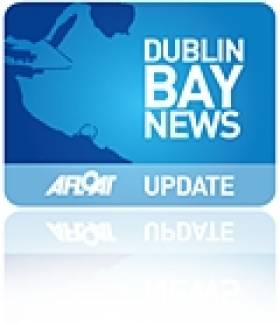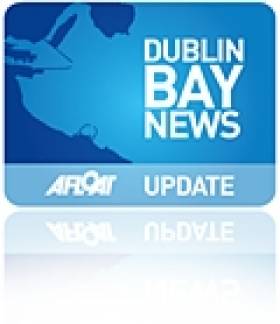Displaying items by tag: Harbour2Harbour
Thousands Expected To Walk Around Dublin Bay For Mental Health Charity On St Patrick’s Day
Newly elected Lord Mayor of Dublin Tom Brabazon has launched the 15th annual Aware Harbour2Harbour Walk, which will take place on St Patrick’s Day, Tuesday 17 March, from 10.30am.
Over 2,000 enthusiastic walkers are expected to take on the 16.2 mile/26km challenge around Dublin Bay, with the option of starting from Howth Harbour or Dun Laoghaire Harbour.
Suitable for most fitness levels, the walk will take participants along the scenic Dublin Bay route with a ‘Halfway Hooley’ hosted at Dublin Port Company’s public plaza. Participants can register now at aware.ie/events at a cost of €25 per person.
The walks starts at 10.30am and you're welcome to arrive from 9.30am to pick up your T-shirt. Once you have your T-shirt you can start walking — walk alone, in a group, or with your family, and you can even bring the dog!
The Harbour2Harbour Walk raised €91,248 last year and has raised €840,560 in total since it began in 2006. All funds raised will go towards Aware’s nationwide support, education and information services. These include Support & Self Care Groups nationwide and a Support Line and Support Mail service, both of which operate 365 days a year.
Aware also delivers a range of positive mental health programmes to adults and senior cycle students nationwide, designed to build resilience and empower people with the skills and tools to cope with the challenges of modern, everyday life.
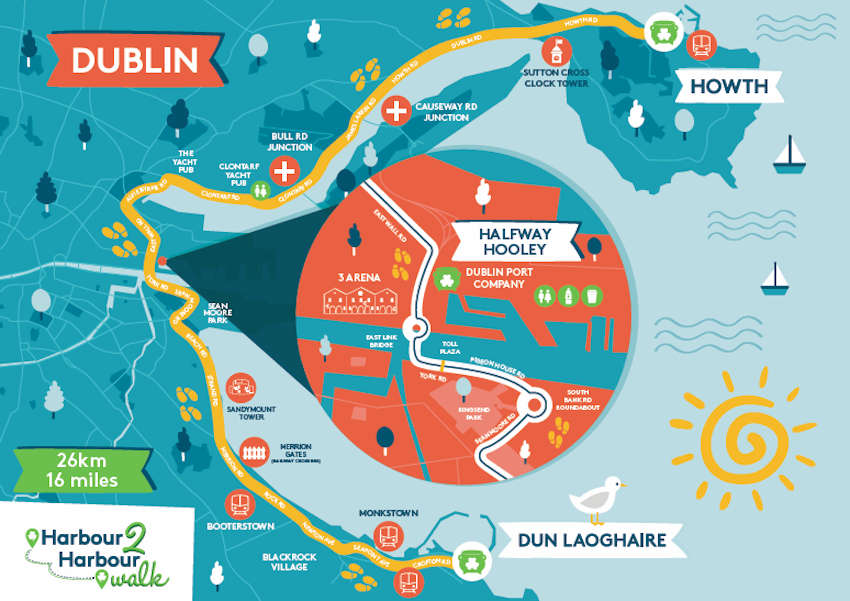
Aware chief executive Dominic Layden said: “The Harbour2Harbour Walk offers the perfect excuse to get friends and family together to celebrate St Patrick’s Day in a fun and healthy way.
“As a result of this and other fundraising efforts, Aware is able to provide vital support services for individuals and families impacted by depression or bipolar disorder, as well as offering free positive mental health programmes for adults and senior cycle students nationwide.
“Thanks to the generous sponsorship from Dublin Port Company, every single penny raised from the Harbour2Harbour Walk will go towards these services, helping ensure that Aware continues to make a real difference in the lives of others throughout the year.”
Lord Mayor of Dublin Tom Brabazon added: “Aware do important work in Dublin and many other communities throughout the country in providing vital services to people suffering with mental health issues. I am thrilled to be here today to announce the annual Aware Harbour2Harbour Walk which has become a hugely popular family activity in Dublin on our country’s national day.”
Dublin Port Company is sponsoring the Dublin event for the sixth year running and will again host the ‘Halfway Hooley’ at their Port Centre, where participating groups travelling either direction can convene to enjoy some refreshments and festivities.
Speaking about their involvement, Dublin Port Company chief executive Eamonn O’Reilly said: “Dublin Port is once again delighted to throw its support behind the Harbour2Harbour Walk. With thousands set to take part it has become one of the fundraising highlights of the year.
“It is a great day that brings so many people together and it is the perfect way to see Dublin’s harbours, river and city all while raising funds for Aware.
“We look forward to welcoming walkers to Port Centre’s public plaza at the halfway stage and our team will be on hand with refreshments and plenty of support to all taking part in this great cause.”
Registration Open For Harbour2Harbour Walks In Dublin & Cork
#Harbour2Harbour - The 10th annual Harbour2Harbour Walk in aid of Aware takes place as always on St Patrick's Day - and registration is now open for anyone who wants to get active and raise money for a great cause in the process.
The 25km route around Dublin Bay runs between Howth and Dun Laoghaire. Walkers can start at either end of the route, which usually takes four to five hours.
And as ever there's a rest stop for refreshments at the half-way mark, this year at Point Village near the East Link bridge.
Last year's event saw more than 850 walkers turn out to raise funds for the mental health charity Aware - but there's always room for more.
That's why 2015 sees the first Harbour2Harbour walk in Cork, a 10km loop from Carrigaline to Crosshaven and back alonside Cork Harbour.
Registration this year for the Dublin event is €25 for individuals (€20 in Cork). Register online at Aware.ie.
Harbour2Harbour Walk Around Dublin Bay This Sunday
#Harbour2Harbour - There's not much time left to register for the 2013 Harbour2Harbour Walk in aid of Aware on St Patrick's Day.
The 16.2 mile walk around Dublin Bay begins at 10.30am on Sunday 17 March, taking four to five to complete, and it's your choice whether you begin at Howth Harbour and walk to Dun Laoghaire Harbour or vice versa.
Organisers say over 1,200 people took part in las year's walk, raising more than €40,000 for Aware.
Apart from the great stretch of the legs and experiencing the beautiful vistas of Dublin Bay, the main aim of the day is to raise funds for Aware Support Services, and once registered to take part you will receive information on how to raise sponsorship.
Online registration is €20 per individual or €30 for a group of 2 (children under 16 are free). Late registration will also be available on the morning of the walk itself.
More information about the day can be found at Aware's Harbour2Harbour webpage HERE.
Harbour2Harbour Dublin Bay Walk Coming Soon
#DUBLIN BAY NEWS - The annual St Patrick's Day Harbour2Harbour Walk in aid of mental health charity Aware is just a few weeks away.
The 16.2 mile walk around Dublin Bay begins at 10.30am on Saturday 17 March, taking around five hours to complete, and it's your choice whether you begin at Howth Harbour and walk to Dun Laoghaire Harbour or vice versa.
Organisers describe the event as "a great day out for family, friends and individuals, all of whom get a great sense of achievement and a great view of Dublin Bay."
Of course the main aim of the day is to raise funds for Aware, and once registered to take part you will receive a fundraising pack containing letters, information, maps and sponsorship cards. You can also set up your own fundraising page on MyCharity.ie.
The registration fee is €15 per individual or €25 for a group of 2 (children under 16 are free). Advance online registration is now available at the Aware website HERE. Late registration will be available on the morning of the walk itself.
Volunteers are also required to help with late registration on the morning of the walk and act as stewards at various points along the route. If you can help please call 01 661 7211 or e-mail [email protected].
More information about the day can be found at Aware's Harbour2Harbour webpage HERE.
Aware's Harbour 2 Harbour Walk Around Dublin Bay
Alternatively walkers are welcomed to take the walk in the reverse direction starting at Howth and terminating at Dun Laoghaire. The walk takes approximately 4-hours to complete. The 16.4 mile route that skirts the shores of Dublin Bay will offer great views!
The walk last year was taken by families, friends and individuals and provided participants with a great sense of achievement!
For this year's event, walkers are invited to take part by booking places in advance online. Entries (€10 per person) close at midnight on Sunday 13 March, click HERE. Late registration will also be available on the morning of the walk (€15 per person) or email [email protected]
To read more about Aware click http://www.aware.ie (noting the locall Aware Helpline Tel: 1890 303 302 / calling from overseas +353 1 6766 166) and further information about the Helpline click HERE


























